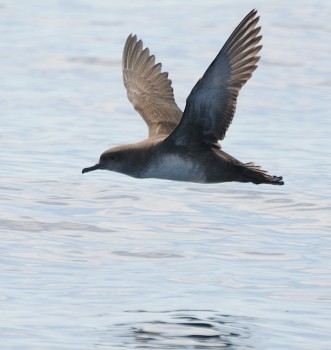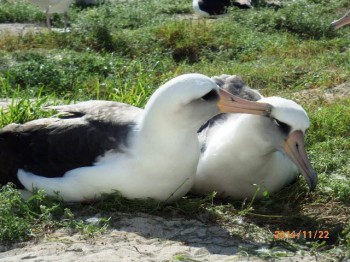Jeff Troy (Department of Biology, Texas State University, San Marcos, USA) and colleagues write in-press in the Journal of Fish and Wildlife Management on identifying new suitable breeding habitat for Endangered Newell's Shearwater Puffinus newelli on the Hawaiian island of Kauai.
The paper’s abstract follows:
The Newell's shearwater, or `A`o (Puffinus newelli), is endemic to the main islands of the Hawaiian Archipelago and is listed as endangered on the IUCN Red List and as threatened under the US Endangered Species Act. Using abiotic and biotic environmental variables, we developed a terrestrial habitat suitability model for this species on Kauai to predict habitat that could be suitable in the absence of anthropogenic threats. In addition, we developed a habitat/threat-isolation index incorporating information from our suitability model to identify regions of structurally suitable habitat with less exposure to certain anthropogenic threats (relative to other portions of the island). The habitat suitability model suggests that slope, density of rock fragments within the soil, and native vegetation cover are important factors associated with the current known distribution of the Newell's shearwater on Kauai, and that a moderate portion of the sloped interior terrain of Kauai could potentially be suitable nesting habitat for this species. The habitat/threat-isolation index identified the mountains on the north-central portion of the island as structurally suitable habitat most isolated from a combination of major anthropogenic disturbances (relative to other portions of the island). Much of this region, however, is privately owned and not designated as an official reserve, which could indicate a need for increased conservation action in this region in the future. This information is important for conservation biologists and private landowners because expanding efforts to control non-native predators, as well as management of additional lands as reserves, may be necessary for the protection and preservation of the Newell's shearwater.”

Newell's Shearwater, photograph by Eric Vanderwerf
Reference:
Troy, J.R., Holmes, N.D., Veech, J.A., Raine, A.F. & Green, M.C. 2014. Habitat suitability modeling for the Newell's Shearwater on Kauai. Journal of Fish and Wildlife Management doi: http://dx.doi.org/10.3996/112013-JFWM-074.
John Cooper, ACAP Information Officer, 03 December 2014

 English
English  Français
Français  Español
Español 


